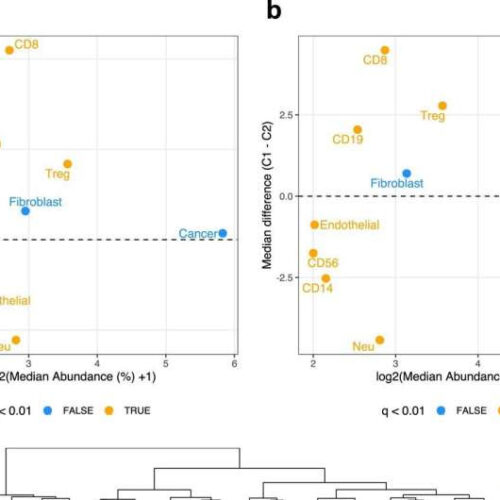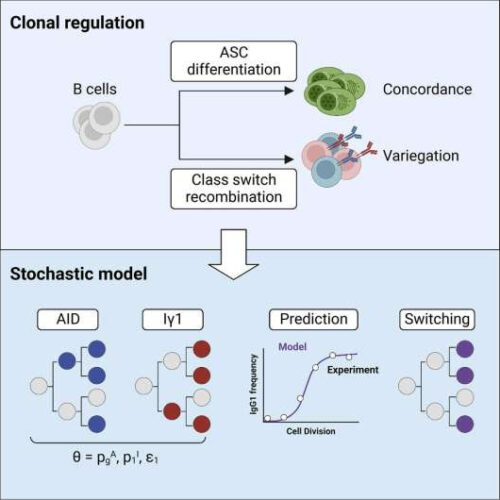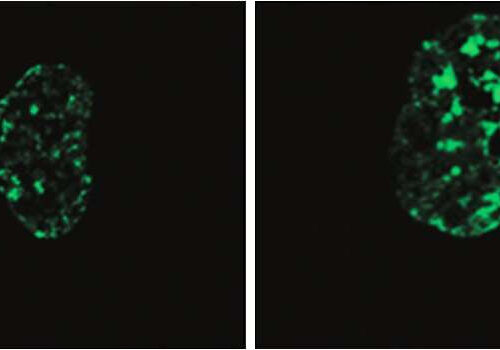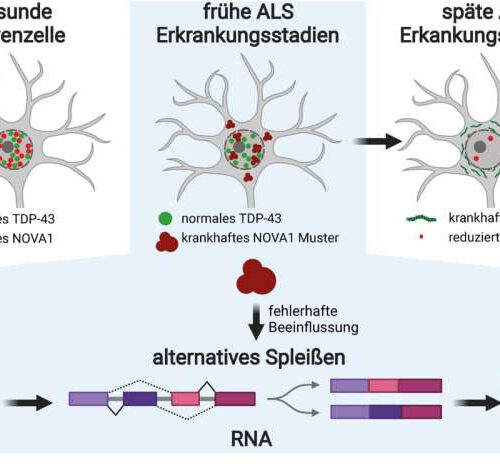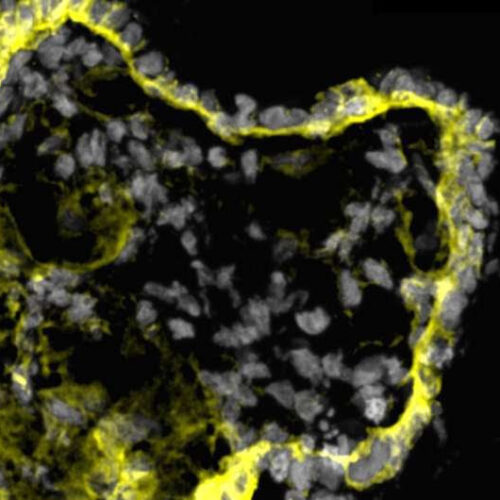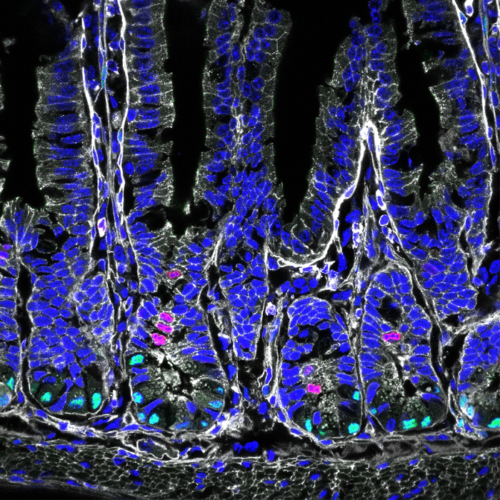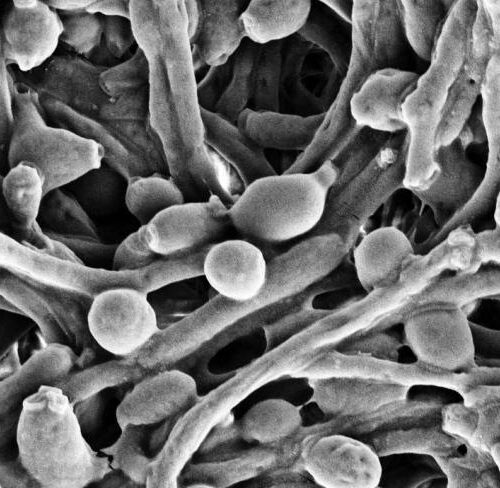by University College London Differences in the tumor microenvironment between cervical cancer subgroups. Plot showing median abundances (x-axis) and median differences (%, y-axis) for different cell types estimated using MethylCIBERSORT, with significant differences (FDR < 0.01, Wilcoxon Rank Sum Test) in orange, for a TCGA cohort and b combined validation cohorts. c 68 genes in genesets associated...
Tag: <span>disease</span>
Cells play ‘molecular roulette’ to determine how body fights disease
by Walter and Eliza Hall Institute of Medical Research Graphical abstract. Credit: Immunity (2022). DOI: 10.1016/j.immuni.2022.08.004 A new discovery about how cells make antibodies has revealed the surprisingly random way the body’s immune system defends against infection and disease. The WEHI-led study showed cells responsible for making antibody proteins use a randomization process to determine which type...
‘It took everything’: the disease that can be contracted by breathing California’s air
Valley fever, derived from a fungus that lives in the US south-west’s soil, is on the rise as climate crisis dries out the landscape Valley fever is increasing in California’s Central Valley as the climate crisis creates a parched landscape where the fungus that causes the disease thrives. Photograph: Mario Tama/Getty Images Dani Anguiano in...
New target identified for treatment of premature aging disease
by Salk Institute Left: Hutchinson-Gilford progeria syndrome cell with signs of premature aging. This cell shows less histone protein (green), which normally helps maintain the cell’s DNA integrity and function. Right: The cell shows less signs of aging when LINE-1 RNA is reduced, and there is more histone protein present. Credit: Salk Institute A stretch of...
ALS: Early disease mechanisms discovered
by Friedrich–Alexander University Erlangen–Nurnberg Stages of development in a nerve cell affected by ALS. Credit: Prof. Dr. Beate Wimmer Currently, there is no cure for amyotrophic lateral sclerosis (ALS). Things could soon change, however. Researchers at FAU and the University of California San Diego (UCSD) have identified a protein that already displays pathological characteristics at an...
Scientists use mini-kidney models to identify potential drugs for polycystic kidney disease
by Keck School of Medicine of USC Human cystic kidney organoid. Credit: Cheng (Jack) Song/McMahon Lab In a new study in Cell Stem Cell, scientists from the USC laboratory of Andy McMahon generated simple kidney-like structures called organoids and used them to identify potential drugs to treat adult-onset polycystic kidney disease. Affecting 8 million patients worldwide,...
Determining Disease Through White Blood Cells
By Dr. Liji Thomas, MD Reviewed by Emily Henderson, B.Sc. White cells are the immune cells of the body. Also called leukocytes, they are useful in fighting infections and belong to five types. About 100 million white cells are produced by the body each day. These include granulocytes, comprising neutrophils, basophils, and eosinophils, and the...
New link between diet, intestinal stem cells and disease discovered
HELMHOLTZ ZENTRUM MÜNCHEN – GERMAN RESEARCH CENTER FOR ENVIRONMENTAL HEALTH IMAGE: INTESTINAL STEM CELLS IN GREEN, CELL DIVISION IN RED. CREDIT: HELMHOLTZ MUNICH / ANIKA BÖTTCHER The intestine is essential for maintaining our energy balance and is a master at reacting quickly to changes in nutrition and nutrient balance. It manages to do this with...
Fungi that live in the gut influence health and disease
UNIVERSITY OF UTAH HEALTH IMAGE: The fungus Candida albicans, a type of yeast, lives in the gut microbiota and plays a role in health and gastrointestinal disease. The scanning electron micrograph shows the yeast in its pathogenic, hyphal form. CREDIT: VADER 1941 (Salt Lake City) – Bacteria’s role in gut health has received a lot...
Antibiotics use early in life increases risk of inflammatory bowel disease later in life
Antibiotics use early in life increases risk of inflammatory bowel disease later in life MARTIN BLASER, DIRECTOR OF THE RUTGERS CENTER FOR ADVANCED BIOTECHNOLOGY AND MEDICINE view more CREDIT: RUTGERS UNIVERSITY Even short, single antibiotic courses given to young animals can predispose them to inflammatory bowel disease (IBD) when they are older, according to Rutgers...

